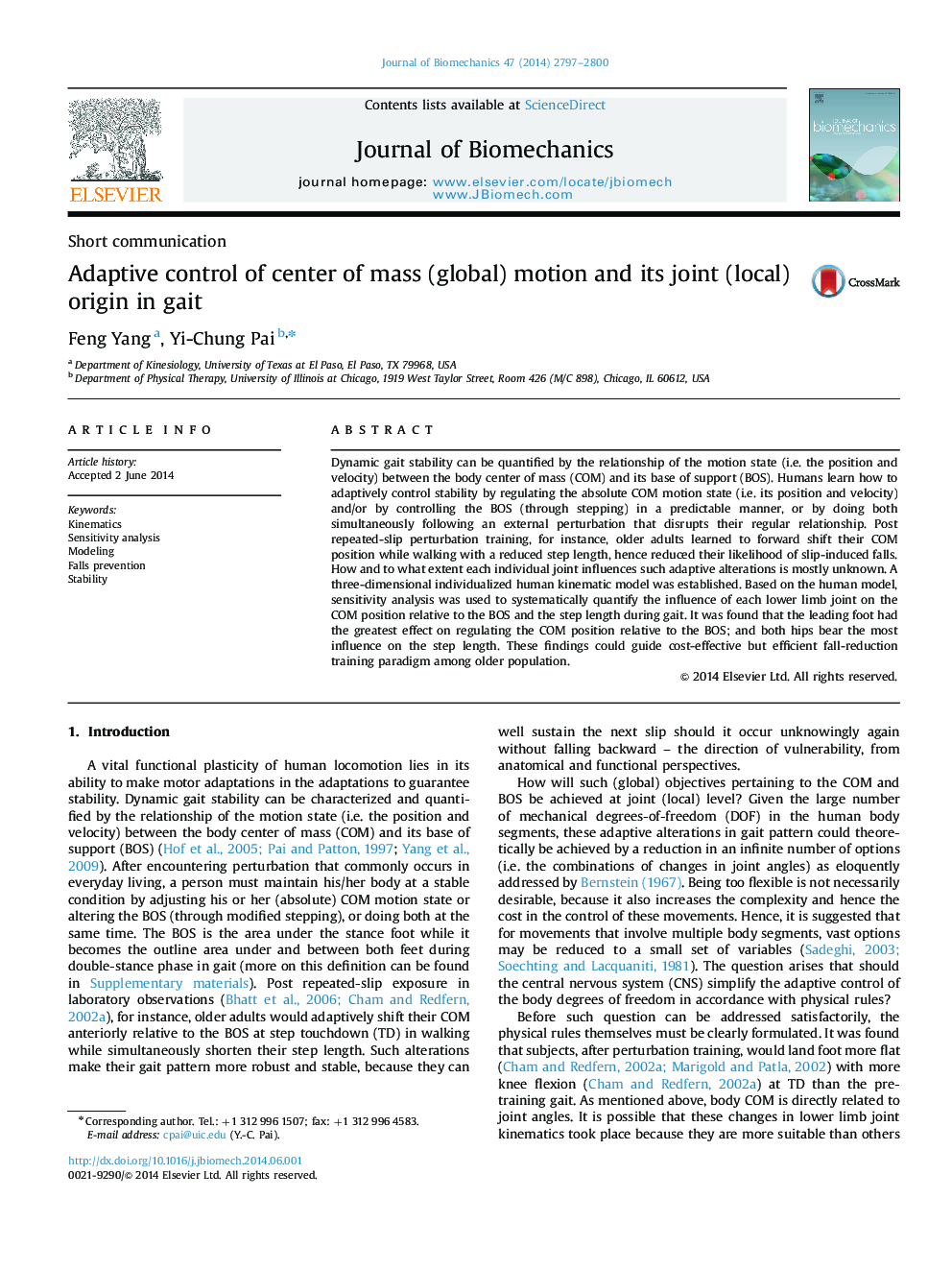| Article ID | Journal | Published Year | Pages | File Type |
|---|---|---|---|---|
| 10431873 | Journal of Biomechanics | 2014 | 4 Pages |
Abstract
Dynamic gait stability can be quantified by the relationship of the motion state (i.e. the position and velocity) between the body center of mass (COM) and its base of support (BOS). Humans learn how to adaptively control stability by regulating the absolute COM motion state (i.e. its position and velocity) and/or by controlling the BOS (through stepping) in a predictable manner, or by doing both simultaneously following an external perturbation that disrupts their regular relationship. Post repeated-slip perturbation training, for instance, older adults learned to forward shift their COM position while walking with a reduced step length, hence reduced their likelihood of slip-induced falls. How and to what extent each individual joint influences such adaptive alterations is mostly unknown. A three-dimensional individualized human kinematic model was established. Based on the human model, sensitivity analysis was used to systematically quantify the influence of each lower limb joint on the COM position relative to the BOS and the step length during gait. It was found that the leading foot had the greatest effect on regulating the COM position relative to the BOS; and both hips bear the most influence on the step length. These findings could guide cost-effective but efficient fall-reduction training paradigm among older population.
Related Topics
Physical Sciences and Engineering
Engineering
Biomedical Engineering
Authors
Feng Yang, Yi-Chung Pai,
